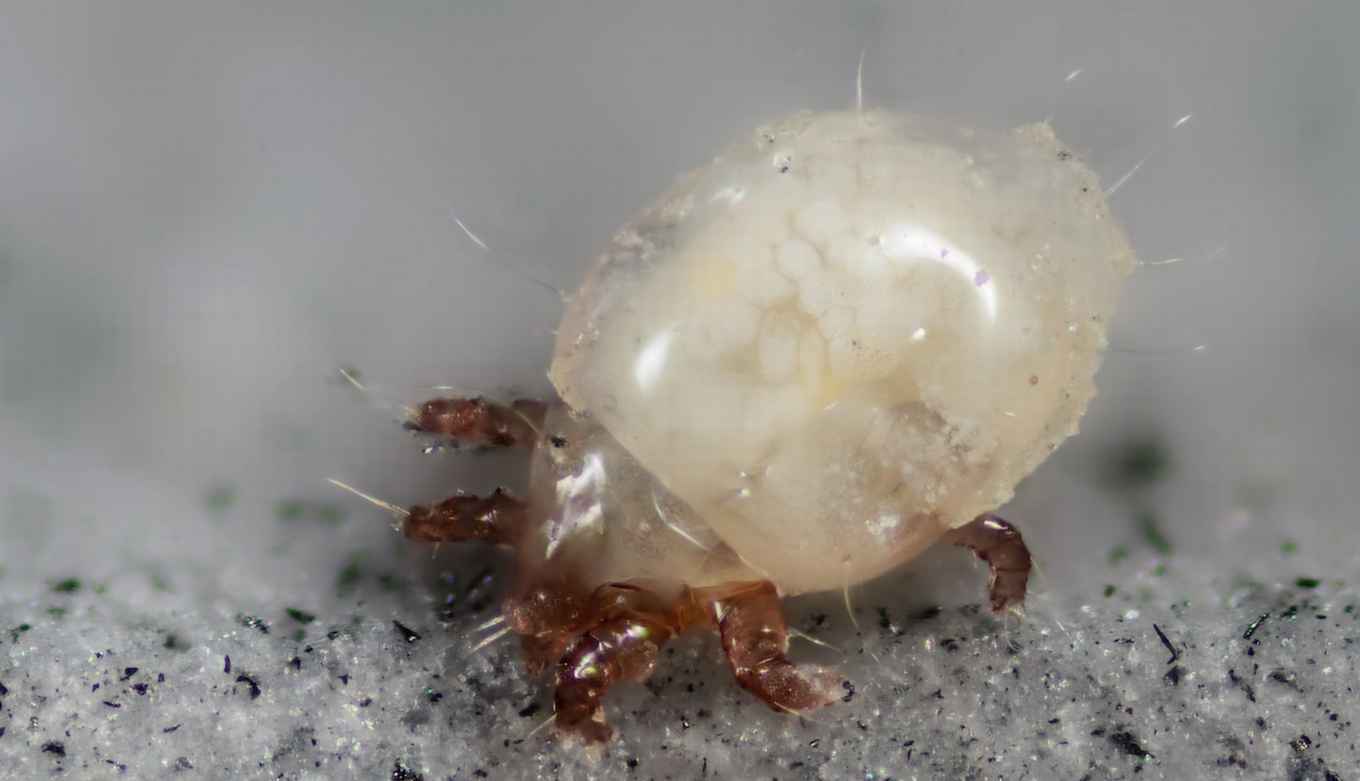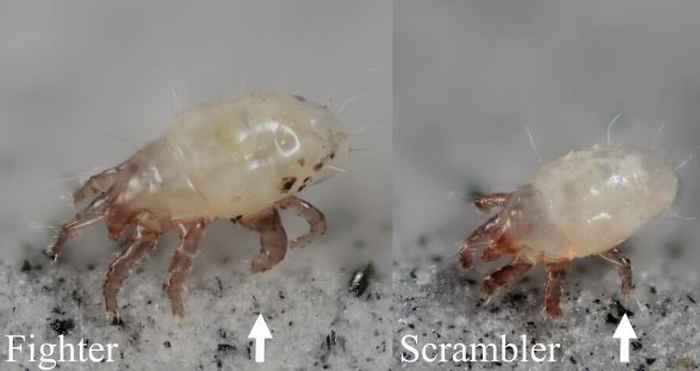Researchers discover new male variant of bulb mite
‘Mega-scramblers’ could shed new light on how organisms adapt to changing environments
18 May 2018

Kathryn Stewart and her colleagues from the UvA’s Institute for Biodiversity and Ecosystem Dynamics (IBED) study ecological and evolutionary dynamics. One of their main interests is on how individuals may increase their likelihood for reproductive opportunities by adopting alternative mating tactics. Such tactics manifest through various behavioural, morphological or physiological traits.
Morphologically similar to females
Until now, male bulb mites have been known to display two discrete reproductive tactics: ‘fighters’ and ‘scramblers’. Fighters have a thickened and sharply terminated third leg pair than can be used to fight and kill other males, while scramblers have no such armaments. ‘Surprisingly, during our experiments we kept noticing males that are morphologically similar to females, with a large body, bulbous abdomen and slim third leg pair’, says Stewart. ‘We named this variant the ‘mega-scrambler’.


Unnoticed phenomenon
The bulb mite is widely used as a model organism for studying alternative reproductive tactics (ARTs). ‘Which makes it even more surprising that this third male morphology, or ‘trimorphism’, has not been noted before. It was important for us to describe this new type of ART because it has important implications for our understanding of how organisms adapt to rapidly changing environments and population dynamics, but also because we want to encourage others to not overlook model systems that are thought to be completely described.’
A possible explanation
Now that trimorphism has been identified in the bulb mite, the next steps are to study the origins and mechanisms of this tactic and to find out whether it is adaptive. The researchers will use follow-up studies to identify a possible explanation for the existence of mega-scramblers and to establish whether males mimic females as a way to copulate and avoid aggressive interactions with other males. In addition, the researchers will investigate whether mega-scramblers can produce healthy offspring and if other males are indeed less aggressive towards males who mimic females.
Publication details
Kathryn Stewart, Tom van den Beuken, Flor Rhebergen, Jacques Deere & Isabel Smallegange: ‘Evidence for a third male type in a male-dimorphic model species’ in: Ecology, 17 May 2018. DOI: 10.1002/ecy.2239.